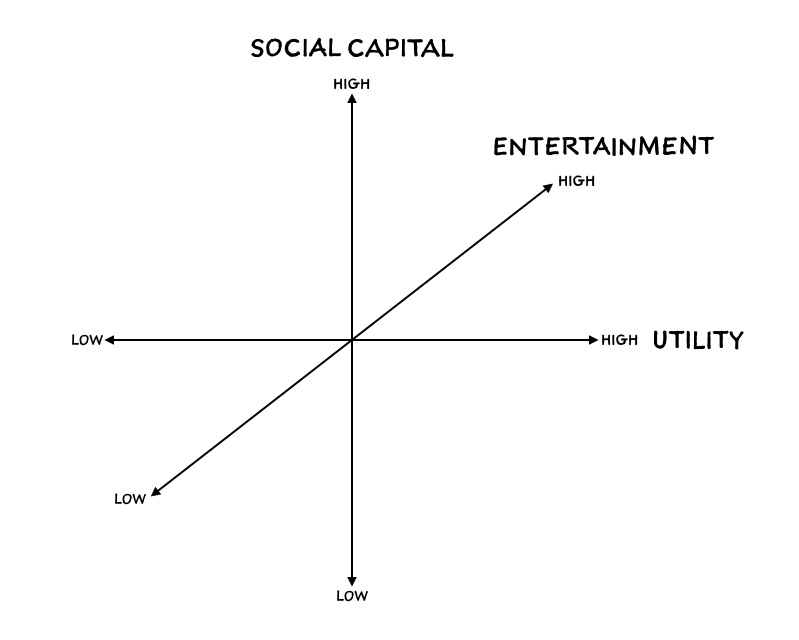Introduction to social capital
Social capital is a leading indicator of financial capital, and so its nature bears greater scrutiny. Analyzing social capital dynamics explain online behavior that seem irrational.

Evaluates social networks’ strength on three axes: Social Capital, Entertainment, and Utility.
- Utility is product functionality. If you can find the answer to your question on Quora, the product are providing you utility.
- Social capital relies on the creation of a “successful status game.” e.g. crypto
Social capital matrix
Leaving Entertainment out of the equation, Wei talks about five arcs that social networks can follow, four of which are trade-offs between social capital and utility over time:

-
First Utility, Then Social Capital. “Come for the tool, stay for the network.” Instagram first attracted users with an easy photo editing tool and became a photo-based network on top of which people have built huge followings and businesses.
-
First Social Capital, Then Utility. Wei highlights Foursquare, Wikipedia, Quora, and Reddit as products that used the promise of social capital to get people to do free work that then becomes a utility for the masses.
-
Utility, But Not Social Capital. Messaging apps are incredibly useful for communicating with people you know, but don’t really help users build up social capital.
-
Social Capital, But Little Utility. Wei puts Facebook in this category, mentioning that many of his friends just stopped using Facebook with no impact on their life (This describes me too, as I suspect it describes many of you).
The fifth category, the “holy grail,” is Both Social Capital and Utility Simultaneously.
Summary
- Social networks need to be analyzed based on more than their network effects.
- There are three axes for analyses: Social Capital, Utility, and Entertainment.
- New social networks are like ICOs, particularly because successful ones will use an appropriately difficult proof of work to create scarcity and status.
- There are many paths social networks follow, but the best is to have high social capital and utility from the start.
- There are two asymptotes that even successful social networks might hit: the proof of work ceiling and social capital inflation/deflation.
- Networks that start with high social capital need to figure out how to build utility before they hit those asymptotes to survive and thrive.
